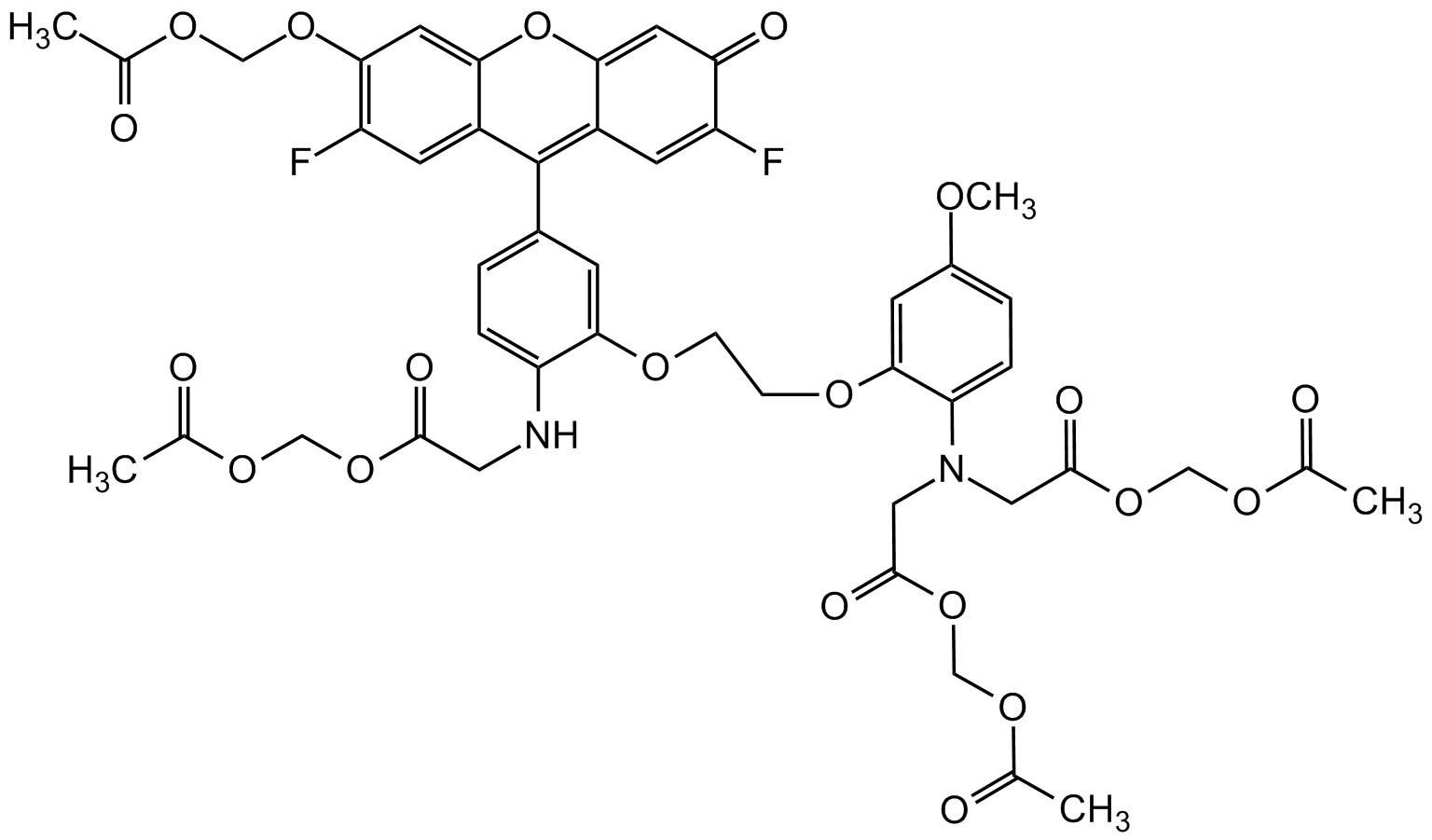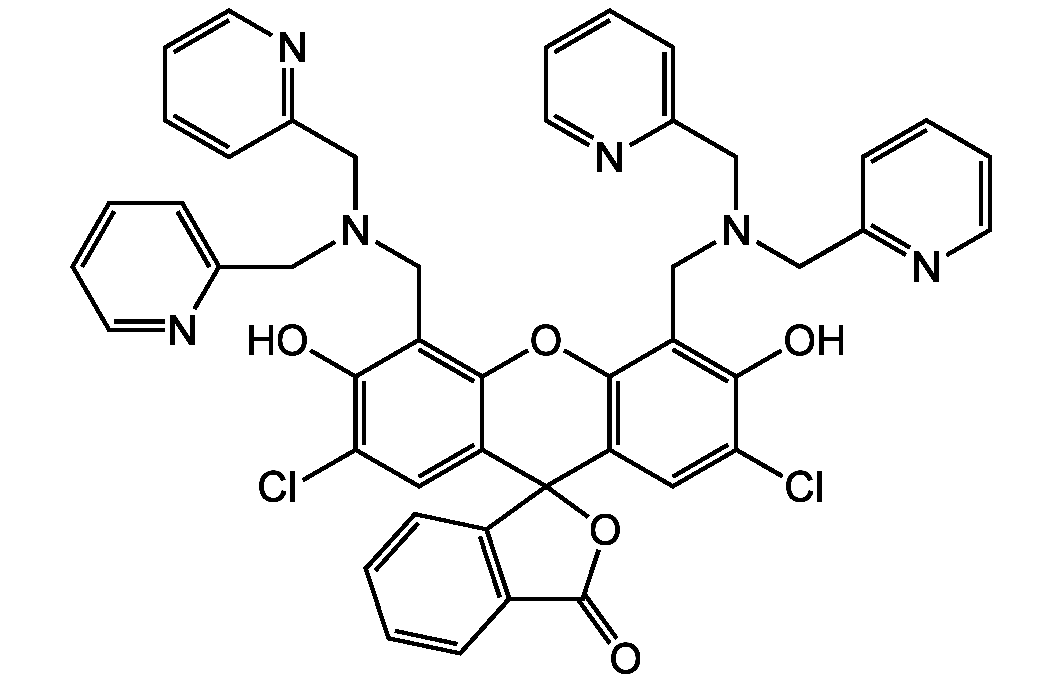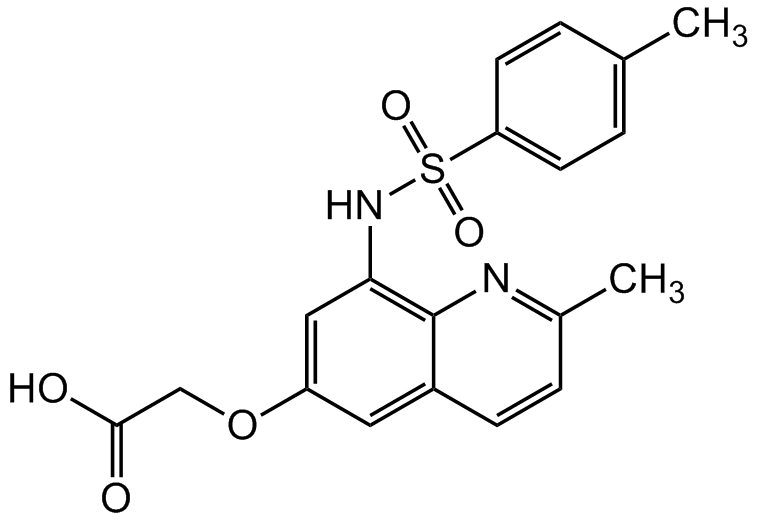
Chemical Structure
Zin3 AM
CDX-F0019
CAS Number562102-46-9
Product group Chemicals
Estimated Purity>85%
Molecular Weight982.85
Overview
- SupplierChemodex
- Product NameZin3 AM
- Delivery Days Customer10
- CAS Number562102-46-9
- CertificationResearch Use Only
- Estimated Purity>85%
- Molecular FormulaC46H44F2N2O20
- Molecular Weight982.85
- Scientific DescriptionChemical. CAS: 562102-46-9. Formula: C46H44F2N2O20. MW: 982.85. Synthetic. Zin3 AM is a cell-permeable Zn2+-selective indicator (Absorption=456nm), that once it enters the cell is hydrolized by esterases to convert the bright fluorescent Zin3 (Ex/Em: ~494/516nm). Zin3 is suitable for detection of Zn2+ concentrations in the 1-100 nM range and it has shown to be very Zn2+-sensitive and Zn2+-specific. The cell permeant AM-ester is useful for detecting low intracellular Zn2+ levels and small concentration changes. Zin3 exhibits high Zn2+-binding affinity that is unperturbed by Ca2+ concentrations up to at least 1 microM (Kd (Zn2+) (in buffer): ~15nM). In addition, Zin3 exhibits a >50-fold increase in fluorescence in response to saturating levels of Zn2+. This dye is usedpredominantly for imaging applications, but has also used in cell-based microplate assays and flow cytometry protocols. The product is typically loaded into cells by adding the dissolved indicator to medium containing cells. Zinc is an important divalent cation in biological systems, influencing DNA synthesis, microtubule polymerization, gene expression, apoptosis, immune system function and the activity of enzymes such as carbonic anhydrase and matrix metalloproteinases (MMP). Zn2+ is also functionally active in synaptic transmission, and is a contributory factor in neurological disorders including epilepsy and Alzheimers disease. - Zin3 AM is a cell-permeable Zn2+-selective indicator (Absorption=456nm), that once it enters the cell is hydrolized by esterases to convert the bright fluorescent Zin3 (Ex/Em: ~494/516nm). Zin3 is suitable for detection of Zn2+ concentrations in the 1-100 nM range and it has shown to be very Zn2+-sensitive and Zn2+-specific. The cell permeant AM-ester is useful for detecting low intracellular Zn2+ levels and small concentration changes. Zin3 exhibits high Zn2+-binding affinity that is unperturbed by Ca2+ concentrations up to at least 1 microM (Kd (Zn2+) (in buffer): ~15nM). In addition, Zin3 exhibits a >50-fold increase in fluorescence in response to saturating levels of Zn2+. This dye is usedpredominantly for imaging applications, but has also used in cell-based microplate assays and flow cytometry protocols. The product is typically loaded into cells by adding the dissolved indicator to medium containing cells. Zinc is an important divalent cation in biological systems, influencing DNA synthesis, microtubule polymerization, gene expression, apoptosis, immune system function and the activity of enzymes such as carbonic anhydrase and matrix metalloproteinases (MMP). Zn2+ is also functionally active in synaptic transmission, and is a contributory factor in neurological disorders including epilepsy and Alzheimers disease.
- SMILESO=C1C(F)=CC2=C(C3=CC=C(NCC(OCOC(C)=O)=O)C(OCCOC4=CC(OC)=CC=C4N(CC(OCOC(C)=O)=O)CC(OCOC(C)=O)=O)=C3)C5=CC(F)=C(OCOC(C)=O)C=C5OC2=C1
- Storage Instruction-20°C,2°C to 8°C
- UNSPSC41116134


